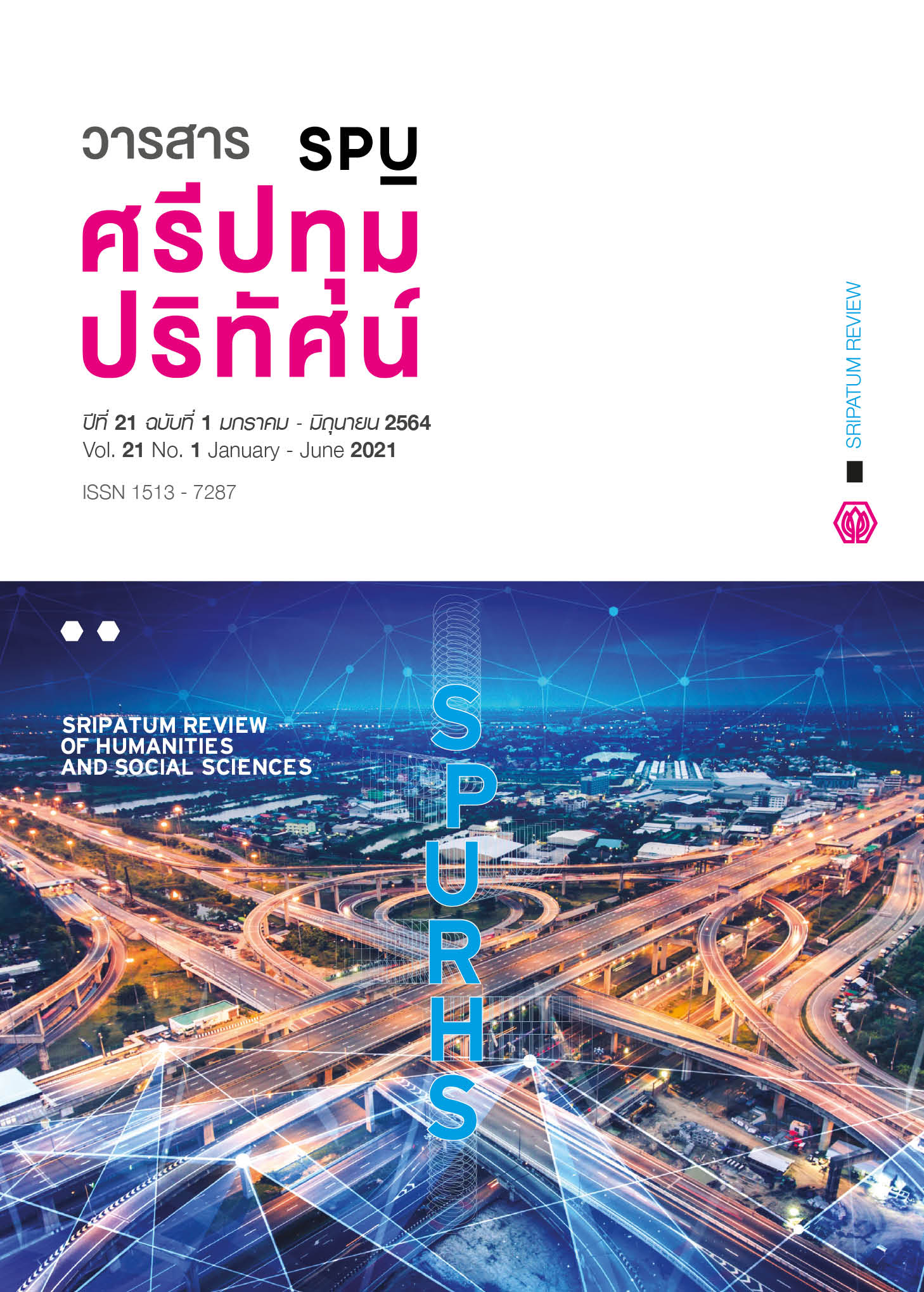South Korea’s Fashion Industry Development
Main Article Content
Abstract
The objectives of this research were to study the contents of the state sector policy, private sector policy, civil society sector policy, and the roles of designers of fashion industry development of South Korea; to study the methods of implementation of those policies into practice; and to propose the development strategy for the Thai fashion industry. This research employed the documentary research method. The data sources were relevant documents, photos, websites, research reports, newspapers and fashion event activities. The results reveal that the South Korean government has formulated a number of creative economic policies in support of fashion industry development. The private sector likewise has policies in support of the fashion industry development; for example, “Samsung” established its “Samsung Fashion and Design Fund (SFDF)” in 2005 with the aim of supporting young designers. As for South Korea’s civil society sector, the “Korea Fashion Association” (KFA) established in 1985, has the main objective to develop South Korea’s fashion industry. It is also found that the roles of South Korea’s fashion industry designers are outstanding. The researcher’s analysis provides strong evidence of how a multi-faceted approach can yield promising results for the development of South Korea’s fashion industry.
Article Details
1. กองบรรณาธิการสงวนสิทธิ์ในการพิจารณาและตัดสินการตีพิมพ์บทความในวารสาร
2. บทความทุกเรื่องจะได้รับการตรวจสอบทางวิชาการโดยผู้ทรงคุณวุฒิ แต่ข้อความและเนื้อหาในบทความที่ตีพิมพ์เป็นความรับผิดชอบของผู้เขียนแต่เพียงผู้เดียว มิใช่ความคิดเห็นและความรับผิดชอบของมหาวิทยาลัยศรีปทุม
3. การคัดลอกอ้างอิงต้องดำเนินการตามการปฏิบัติในหมู่นักวิชาการโดยทั่วไป และสอดคล้องกับกฎหมายที่เกี่ยวข้อง
References
Cannon, P.J. Perreault, D.W., Jr. and McCarthy, E. J. (2008). Basic Marketing. New York: McGraw-Hill Press.
Department of Global Communication and Content Division. (2018). Clothing and Fashion. [Online]. Retrieved June 18, 2018, from: http://www.korea.net/AboutKorea/Korean-Life/clothing.
Department of Industrial Promotion. (2016). Thai Fashion Industry SMEs. Promotion. [Online]. Retrieved May 7, 2020, from: http://www.brandbuffet.in.th/2016/09/fashion-next-2017/. (in Thai)
Department of Industrial Promotion. (2020). Thai Fashion Potential Development Project [Online]. Retrieved May 7, 2020, from: http://www.dip.go.th/files/article/attachments/dip/da9eec0e7f39486e90be70c37ac71df9.pdf. (in Thai)
Encyclopedia of Clothing and Fashion. (2005). Korean Dress and Adornment. [Online]. Retrieved February 18, 2019, from: http://www.encyclopedia.com/fashion/encyclopedias-almanacs-transcripts-and-maps/korean-dress-and-adornment.
Han, J. S. (2019). Korea Fashion News. [Online]. Retrieved February 5, 2019, from http://www.koreafashion.org/english/intro/intro_greet.asp.
IMD World Competitiveness Yearbook. (2020). IMD World Competitiveness Ranking 2020. [Online]. Retrieved September 1, 2020, from: file:///C:/Users/User/Downloads/one-year-change-vertical.pdf.
Jitgeugul, P. Tuntiprapa, P. Tunsuhut, P. and Winit, V. (2017). The Mediating Role of Brand Credibility on the Relationship between Brand Familiarity and Brand Attitude of Green Product. Sripatum Review of Humanities and Social Sciences, 17(1), 72-82. (in Thai)
Jung, E.H. and Lee, Y. (2010). Korean Apparel Manufacturing Industry: Exploration from the Industry Life Cycle Perspective. Clothing and Textiles Research Journal, 28(4), 279-294.
Kang, G. and Sohn, J. (2019). Lee Young-hee Brings Modern Touches to Globalized Hanbok [Online]. Retrieved January 28, 2019, from: http://www.korea.net/NewsFocus/Culture/view?articleId=159174.
Kong, L. Gibson, Khoo, L.M. and Semple, A.L. (2006). Knowledge of the Creative Economy: Towards a Relational Geography of Diffusion and Adaptation in Asia. [Online]. Retrieved March 15, 2017, from: http://ink.library.smu.edu.sg/cgi/viewcontent.cgi?article=3048andcontext=
soss_research.
Korea Research Institute for Fashion Industry. (2018). History. [Online]. Retrieved June 15, 2018, from: http://krifi.re.kr/eng/company/history.asp.
Korea Research Institute for Fashion Industry. (2018). RandD Support. [Online]. Retrieved December 20, 2018, from: http://www.krifi.re.kr/eng/research/fulfill.asp.
Miller, I.J. (2005). Fashion and Democratic Relationships. Polity, 37 (1), 3-23.
Ministry of Science, ICT and Future Planning. (2017). Policies. [Online]. Retrieved December 20, 2018, from: http://english.msip.go.kr/english/main/main.do.
Min, S. (2015). Korean Fashion Designers’ Use of Cultural Expression and Its Influence on Their Design. The Journal of Design, Creative Processand the Fashion Industry, 7(2), 219-239.
Na, Y. and Na, D. K. (2015). Investigating the Sustainability of the Korean Textile and Fashion Industry. International Journal of Clothing Science and Technology, 27(1), 23-33.
Park, G.H. (2013). Creative Economy. [Online]. Retrieved December 15, 2018, from: http//www.saenuriparty.kr/.
Samsungdesign.net. (2018). Fashion. [Online]. Retrieved June 15, 2018, from: http://www.samsungdesign.net/Index.asp.
Samsung fashion and design fund. (2020). About. [Online]. Retrieved August 6, 2020, from: http://www.sfdf.co.kr/small/about.
Samsung Fashion Institute. (2020). Research and Development. [Online]. Retrieved July 22, 2020, from: http://www.samsungfashion.com/contents_eng/vision.jsp.
Valle, G.R. (2018). Remind André Kim. [Online]. Retrieved January 28, 2018, from: http://www.mutzine.me/features/remind-andre-kim-fashion-show-2018.
Young, N. and Dong, N. (2015). Investigating the Sustainability of the Korean Textile and Fashion Industry. International Journal of Clothing Science and Technology, 27(1), 23-33.


